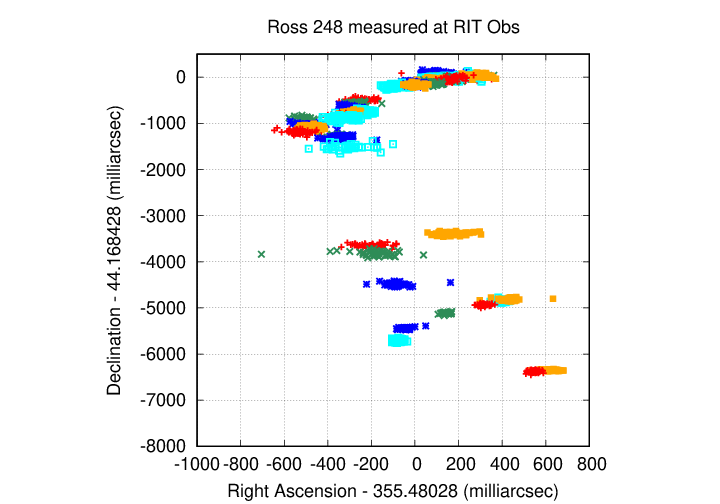
On the night of Jul 18/19, 2024, under very good conditions, I acquired images of the recurrent nova T CrB. This star undergoes outbursts at long intervals of 80 years or so. Its next outburst is predicted to occur soon, perhaps in 2024, and so I've joined the crowd who are monitoring it.
T CrB is still in quiescence, at V = 10.10 this evening.
I also measured the brightness of asteroid (1367) Nongoma for a few hours, as part of a project to determine its rotation period. Its magnitude was about r' = 15.3.
Finally, I acquired 50 images of Ross 248 in order to measure its position, as part of an on-going parallax project.
This recurrent nova brightens from by about 8 magnitudes (!), from V = 10 to about V = 2, around every 80 years. Will we see another outburst this summer?
These observations involved:
Notes from the night:
The picture below shows a cropped image of the field of T CrB from Jun 14/15, 2024. The field of view is about 20 arcminutes across.

I've marked the location of several comparison stars, with magnitudes and names taken from the AAVSO's chart.
star name B V
------------------------------------------------------
A 000-BJS-901 11.190 10.566
B 000-BBW-805 11.840 11.187
C 000-BPC-198 13.049 12.336
--------------------------------------------------------------------------
When the target is centered, the finder TV shows this field:
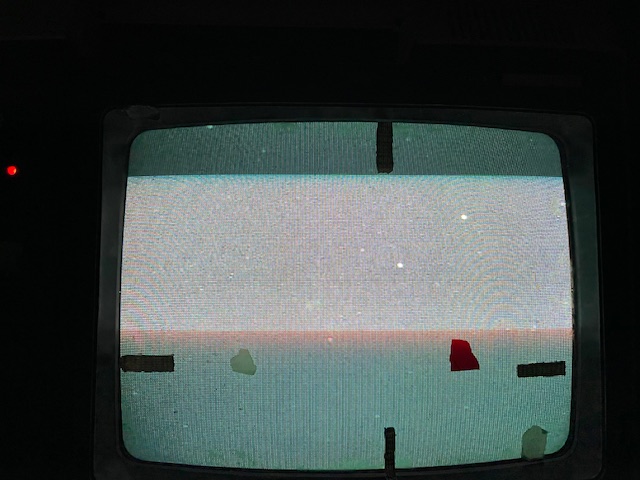
Here's the sky background over the course of the run. No clouds!
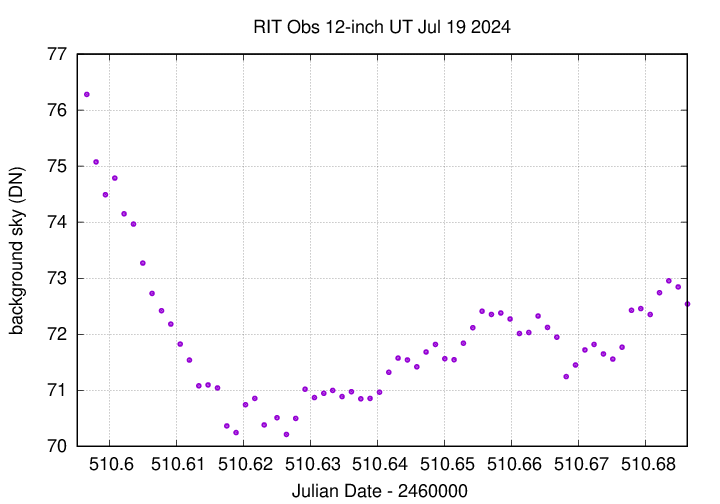
The FWHM was steady in V.

The graph below shows changes in the photometric zeropoint of an ensemble solution of the instrumental magnitudes over the course of the run.

Using aperture photometry with a radius of 7 pixels in V filter (binned 4x4, each pixel is 1.036 arcsec, so a radius of 7.3 arcsec), and 7 pixels in B filter (binned 4x4, each pixel is 1.036 arcsec, so a radius of 7.3 arcsec), I measured the instrumental magnitudes of a number of reference stars and the target. Following the procedures outlined by Kent Honeycutt's article on inhomogeneous ensemble photometry, I used all stars available in each image to define a reference frame, and measured each star against this frame.
Sigma-vs-mag plots show that the floor in V-band was about 0.005 mag, which is good. In B-band, it was 0.004 -- even better.

The measurements show relatively steady brightness, with a couple of tiny, brief bumps.


I've submitted these measurements to the AAVSO.
Not much is known about this asteroid. A set of seven nights of measurements of its light curves -- see Wisniewski, W. Z., et al., Icarus, 126, 395 (1997) -- suggests a period longer than one day, with short-term variations up to 0.2 mag.
A colleague mentioned that he might be preparing a campaign to try to pin down the rotation period, but the object is pretty faint: its V magnitude is around 15.5. Could I contribute? I have been taking measurements when I can to help out.
These observations involved:
On this night, the object was near position
RA = 21:06:41.4 Dec = +10:53:28 (J2000)
I observed for a bit more than three hours, in very good conditions.
Here's the sky during the observations.

The ensemble zero-point adjustment factor shows almost no scatter -- good!

I was able to detect Nongoma clearly in all the images. Using a set of several nearby stars with magnitudes a bit brighter than the target, and colors 0.7 < (B-V) < 0.9, I calibrated the unfiltered measurements to the APASS9 r' passband. The asteroid had an average value of about r' = 15.30, with no obvious variation.
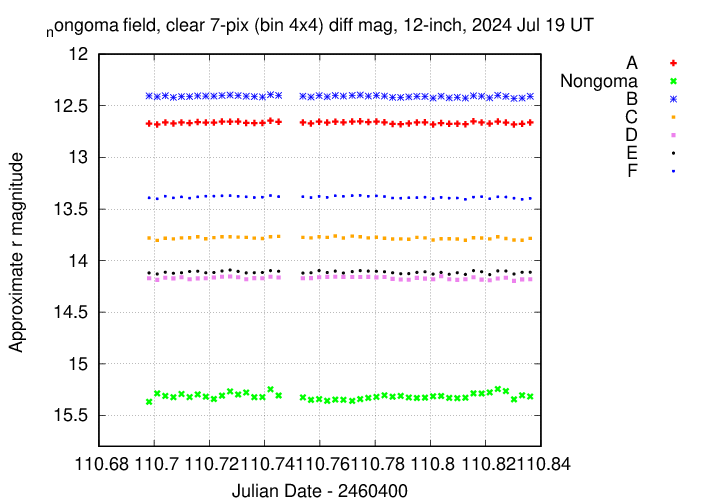
This is one of the stars that a capstone student may study over the next year in a project involving parallax. Ross 248 is a relatively faint red star surrounded by many other stars of similar brightness, so it's a good candidate for high-precision parallax measurements.
These observations involved:
The object is (currently) near position
RA = 23:41:55.27 Dec = +44:10:06.38 (J2000)
A chart of the field is shown below. The size of the chart is about 41 x 27 arcminutes. The noisy area at right (West) is the shadow of the guider's pickoff mirror.
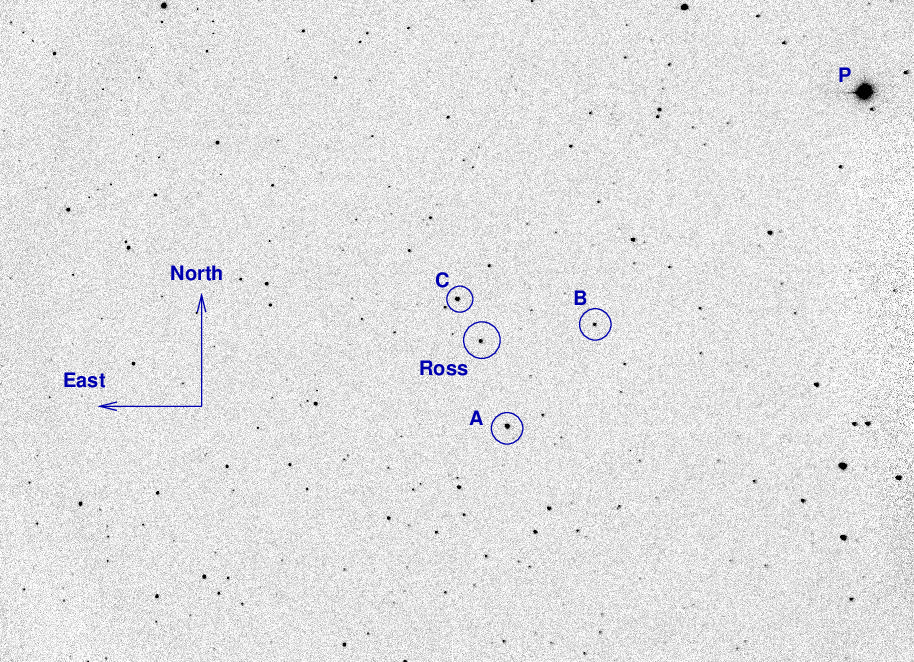
I've marked the location of several comparison stars.
star UCAC4 B V r ------------------------------------------------------------------------- A UCAC4 671-120730 12.617 10.689 B UCAC4 671-120688 C UCAC4 671-120749 10.987 10.663 P kappa And 4.06 4.14 --------------------------------------------------------------------------
I took a photo of the finder TV's screen when pointing to Ross 248; this could be a useful reference for the future:
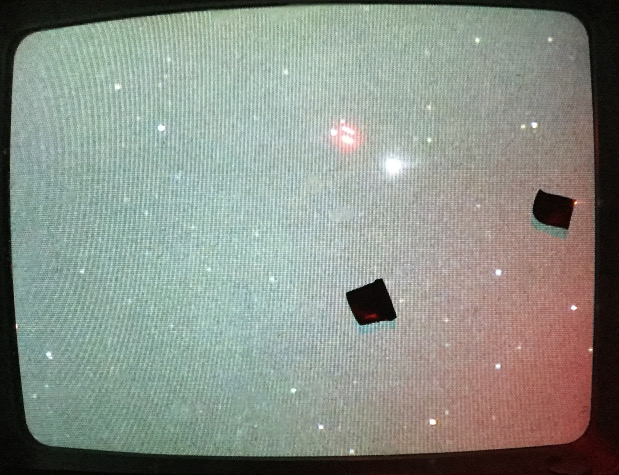
In order to get the best results for Ross 248, it is necessary to use only a subset of the stars in the camera's full field of view. For this evening's data, I chose the "intermediate" subset, and restricted matches to those stars within about 11 arcminutes of the target. It helps to limit the measurement of stars in the images to this same region, too.
Here are the positions I've measured so far. The most recent measurements are at the bottom of this plot.
